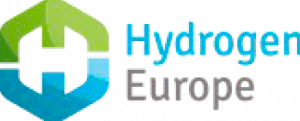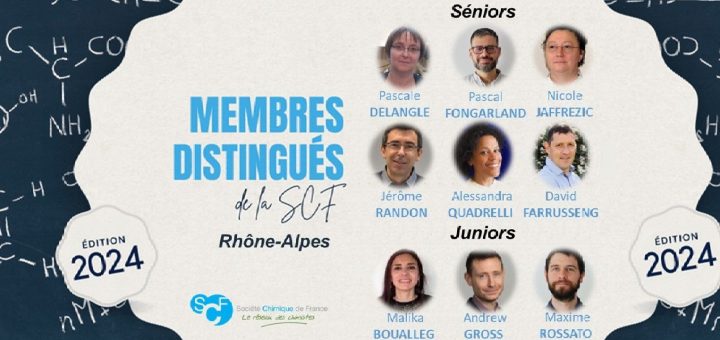Notre groupe développe ensemble des matériaux et des processus de manière concertée, de la preuve de concept à la démonstration à l’échelle de laboratoire.
Nos compétences couvrent un large éventail de sujets et d’expertises en chimie, science des matériaux, génie chimique et analytique permettant de relever les défis techniques et scientifiques actuels en catalyse hétérogène.

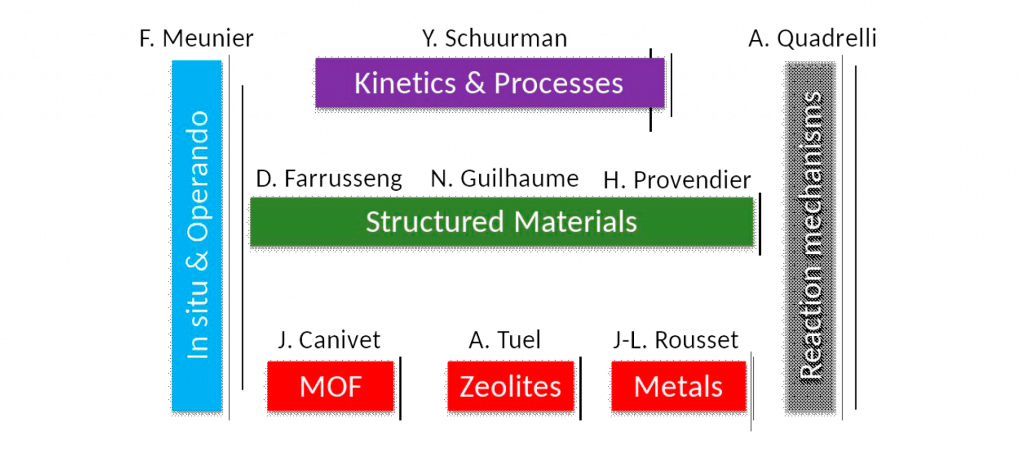
Domaine d’expertise et contacts
- Waste and Biomass to fuel (Dr. Y. Schuurman)
- Catalysis for green energy and pollution remediation (Dr. N. Guilhaume)
- Green chemistry and sustainable energy (Dr. Elsje Alessandra Quadrelli)
- Adsorption processes at solid interfaces (Dr. C. Daniel)
- MOF upscaling and energy storage (Dr. D. Farrusseng)
- Molecular catalytic materials (Dr. J. Canivet)
- New zeolites and inorganic supports (Dr. A. Tuel)
- Catalysis by metals (Dr. J-L. Rousset, Dr. F. Morfin)
- In-situ & Operando studies (Dr. F. Meunier)
- Kinetic and transient studies (Dr. Y. Schuurman)
- Reactor automation & modular control (E. Landrivon)
|
Félicitations à David Farrusseng pour la médaille d’argent 2020 du CNRS. La médaille d’argent récompense les chercheurs pour l’originalité, la qualité et l’importance de leurs travaux, reconnus à l’échelle nationale et internationale. Retrouvez son portrait ici : https://www.youtube.com/watch?v=YFnO4Pl5hY8 |
 |
Introduction
****L’intensification de procédés catalytiques « verts »/propres et durables est l’une des composantes majeures pour relever les défis environnementaux et énergétiques. Cette intensification implique d’intégrer le développement de catalyseurs en rupture avec les systèmes courants, leur mise en œuvre dans des réacteurs éco-conçus pour des bilans énergétiques fortement améliorés, intimement liés aux étapes amont et aval de séparation et de purification. Un des passages obligés réside dans la découverte/optimisation de catalyseurs/adsorbants plus actifs, sélectifs et durables (ex. MOF, zéolithes hierachisées, nanoalliages..). Un autre consiste en une approche plus globale par modélisation des différentes étapes qui constituent le cœur de ces nouveaux procédés intensifiés.
La spécificité de l’équipe ING réside dans la maitrise et la volonté de couvrir la chaine de valeur de l’intégration d’un procédé catalytique, de l’échelle moléculaire jusqu’au démonstrateur. La modélisation en général et plus particulièrement la modélisation micro-cinétique constitue la colonne vertébrale des développements méthodologiques au sein de l’équipe.
Axes de recherche
We look at different processes to convert wastes and biomass to gasoline. We study two main approaches of gasification and pyrolysis processes. For the gasification route, we investigate autothermal reforming reactor using structured catalysts. For the pyrolysis route, we study both bio-oil pyrolysis and its upgrading by FCC process thanks to specially designed test rig. A point of focus is the effect of feed composition and impurities on the activity, selectivity and poisoning of catalysts. |
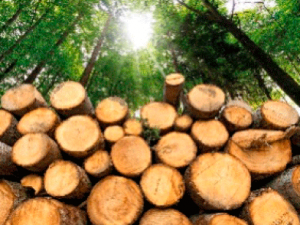 |
https://hydrogeneurope.eu/project/biorobur We study advanced and robust Biogas processing technologies for efficient hydrogen production. Our technology is based on a catalytic autothermal reforming route using easily-recoverable noble-metal catalysts supported on high-heat-conductivity cellular materials. This technology shows advantages compared to steam reforming: catalysts less prone to coking, easier adaptability to biogas changing composition, more compact design, efficient handling of heat, lower materials costs, fast start-up/shut-down, easier process control, etc. |
|
The conversion of CO2 into chemicals and fuels, with particular attention to industrial perspectives and large‐volume options. |
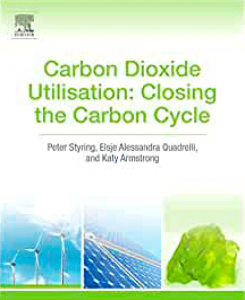 |
Although adsorption of reactants and desorption of products are two elementary steps of catalytic processes, the quantification of adsorption and diffusion rates on/in catalysts are usually overlooked. We can measure adsorption and diffusion in relevant conditions that provide key indications on catalyst or process design. In the context of innovation, our expertise has already led to the discovery and scale-up of successful adsorbents for atmospheric Xenon capture and air purification from ammonia, a Toxic Industrial Compounds (TIC) |
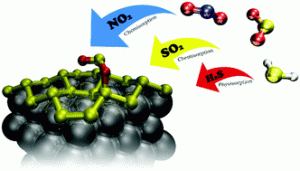 |
MOFs have been discovered about 20 years ago. Among the infinite possible structures, about a dozen of MOFs are commercially available at gram scale, but at a cost that prevent large scale R&D programs. We have entirely revisited synthesis processes and starting from cheap and available raw materials to achieve +100 kg/day scale production of high quality MOF, for example using spray-drying technology. We also study energy related applications, such as methane storage or chilling application using wasted heat. |
|
We are investigating new catalytic systems based on The Concept of Solid Porous Macroligands which address current challenges in fine chemicals synthesis and clean energy production by bridging homogeneous and heterogeneous catalysis using hybrid porous catalysts, especially Metal-Organic Frameworks (MOF). We also study novel purely organic porous platforms allows addressing new challenges in heterogeneous catalysis while tackling issues on stability and control over active site: Covalent Organic Frameworks (COF) and Conjugated Microporous Polymers (CMP). Applications range from C-C coupling to asymmetry, photocatalysis and solar fuels. |
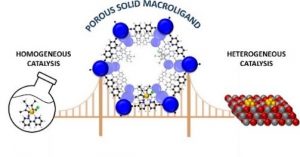 |
Synthetic zeolites are key catalysts for refinery and petro-chemical applications. We investigate original synthesis approaches to develop zeolites with unprecedent morphologies, such as hollow zeolites for encapsulation purposes and zeolites with high control of surface chemistry in order to tune their hydrophily-hydrophoby balance. |
|
Most of hydrogenation and oxidation processes are catalyzed by supported metal based catalysts, such as Pt/alumina or Pd/silica. Based on detailed surface chemistry studies, we investigate the reaction mechanisms, especially on the composition (alloy) and size effects of the metal particles (Single Atom Surface – SAC) and its interaction with the surface in line with the concept of Strong Metal Surface Interaction (SMSI) |
|
Catalyst active sites usually evolves at reaction conditions. This is particularly true for the surface of catalyst particles which often get restructured as their composition, oxidation state and morphology change with time on stream. By means of IR reactor cell, we study and characterize catalytic sites at work which allow to identify true catalytic sites and to establish structure activity relationships. |
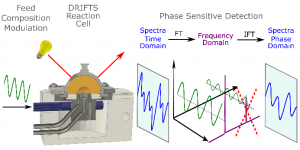 |
|
|
Development of software and hardware solutions for control and monitoring of catalytic reactors |
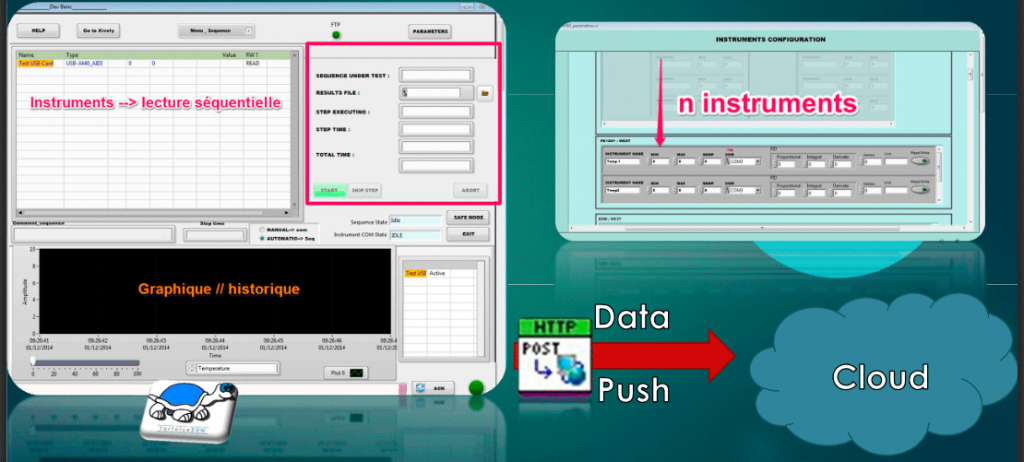 |
Selected recently published examples
Model biogas reforming on Ni-Rh-Based catalysts. Autothermal reforming using Si-SiC Foam as support and effect of H2S and NH3 impurities
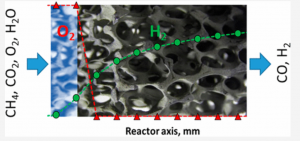
see Ind. Eng. Chem. Res. 2017 – doi 10.1021/acs.iecr.7b01559
and Chemical Engineering Journal 2020 – DOI: 10.1016/j.cej.2020.125534
Unravelling hollow sites as reaction intermediates in CO hydrogenation
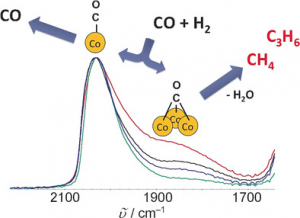
see Angew. Chem. Int. Ed. 2018 DOI: 10.1002/anie.201710301
Multifunctional solids for photo/electrocatalysis and solar fuels
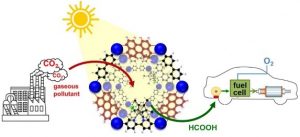
see ACS Catal. 2018, 8, 1653-1661 and Angew. Chem. Int. Ed. 2020, 13, 5116-5122
Bio-inspired solids for asymmetric catalysis
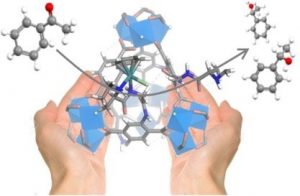
see J. Am. Chem. Soc. 2015, 137, 9409-9416 and Chem. Sci. 2020, 11, 8800-8808
Leading the field of Hollow zeolite single crystals and catalytic application
nearly 30 articles published by the team! Here is the state of the art and key articles:
Small Methods 2018 10.1002/smtd.201800197
ChemCatChem 2018 – 10.1002/cctc.201801225
Applied Catalysis A-General 2019 doi.org/10.1016/j.apcata.2018.10.028
Unravelling the kinetic stability of alumina in water
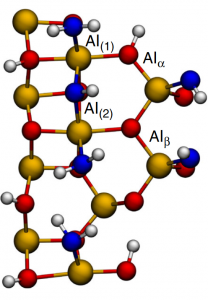
see Nature Communications volume 10, Article number: 3139 (2019)
Catalytic conversion of beech wood pyrolytic vapors
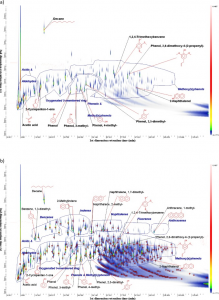
see Journal Of Analytical And Applied Pyrolysis 2018 – DOI: 10.1016/j.jaap.2018.01.015
Ag/ZSM-5 definitively the best Xenon adsorbent and by far!
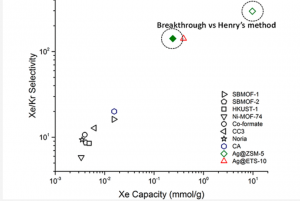
see Ind. Eng. Chem. Res. 2019, – doi /10.1021/acs.iecr.8b04866
Projets de recherche
Research strategy in the ING group mainly lies on EU collaborative research programs, French ANR projects and recurrent collaborations with national research centers and companies like IFPEN, CEA, St Gobain, Orano
On-going EU collaborative programs
- C123 : Methane oxidative conversion and hydroformylation to propylene (2019- 2023)
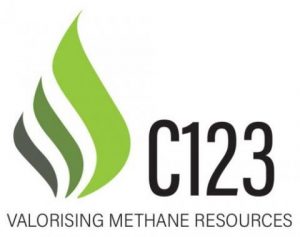
https://www.sintef.no/projectweb/c123/
https://www.linkedin.com/company/h2020-c123/
The H2020 funded C123 project aims at producing C3 products from methane available in stranded and natural gas. Here, we design and develop i) Oxidative coupling of methane Catalysts in presence of CO2 and ii) MOF and Porous Polymer’s catalysts for heterogeneous hydroformylation of ethylene at low pressure.
- IMPRESS: Integration of efficient downstreaM PRocessEs for Sugars and Sugar alcohols (2019- 2023)
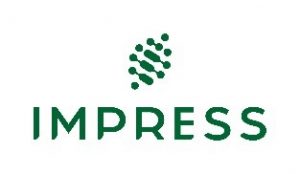
https://www.spire2030.eu/impress
The EU-funded project IMPRESS develops a novel biorefinery concept, which allows the conversion of plant-based non-food materials into important base chemicals. The process involves the use of liquid chromatography purification technology, including a very efficient continuous separation technology. In this project, we design and develop nanoporous adsorbants (zeolites, MOFs) for the purification of light alcohols.
- H-CCATSolid catalysts for arylation of aromatic C-H bonds towards industrialization (2017- 2020)

The H-CCAT project devises solid hybrid materials that are superior catalysts for C-H activation on aromatic compounds, and develops innovative procedures to produce and shape these catalytic materials in an economically and environmentally beneficial way. The catalysts will allow sustainable production of pharmaceutically relevant compounds or other specialty chemicals. In this project, we design and develop organometallics@MOF as catalysts for C-H/C-X biaryls coupling.
- WASTE2ROAD – Biofuels from WASTE TO ROAD transport (2018-2022)
![]()
https://www.sintef.no/projectweb/waste2road/
https://www.linkedin.com/company/waste2road/
The objective of WASTE2ROAD is to develop a new generation of cost-effective biofuels from a range of low-cost biogenic residues and waste fractions (contaminated wood, black liquor from pulp and paper industry, and municipal solid organic waste incl. food residues).
- 4Refinery – Scenarios for integration of bio-liquids in existing REFINERY processes (2017-2021)
![]()
https://www.sintef.no/projectweb/4refinery/
4REFINERY develops and demonstrates the production of next generation biofuels from more efficient primary liquefaction routes integrated with upgraded downstream (hydro)refining processes to achieve overall carbon yields of >45%. Here, we investigate the effect of bio-oil addition on FCC performances.
- BIOROBURplus Advanced direct biogas fuel processor for robust and cost-effective decentralised hydrogen production
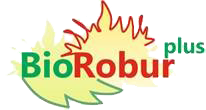
BioROBURplus builds upon the closing FCH JU BioROBUR project (direct biogas oxidative steam reformer) to develop an entire pre-commercial fuel processor delivering 50 Nm3/h (i.e. 107 kg/d) of 99.9% hydrogen from different biogas types (landfill gas, anaerobic digestion of organic wastes, anaerobic digestion of wastewater-treatment sludges) in a cost-effective manner.
On-going collaborative National funded programs
- CatCall Catalysis in water by super hydrophobe hollow shells as solid micelles (2019-2023)
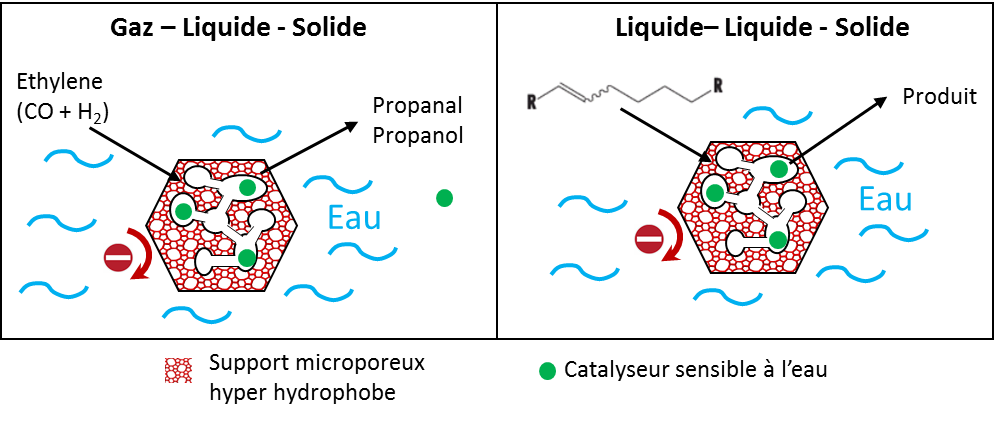
https://anr.fr/Project-ANR-19-CE07-0025
https://www.linkedin.com/company/catcall-anr/
David Farrusseng coordinator “CATCALL deals with the discovery of selective and stable catalysts in water media without the use of noble metals. The project aims at the design of SOLID superhydrophobe catalysts in multiphasic processes. The role of the superhydrophobic catalyst support is to 1) prevent water to access to catalytic sites and 2) enable an overconcentration of substrates on catalytic sites in a kind of ‘Liquid with Permanent Porosity ». We are glad to collaborate with Dr. Benoit Coasne (CNRS – LiPhy).
- POMAC Porous materials for asymmetric catalysis (2018-2022)
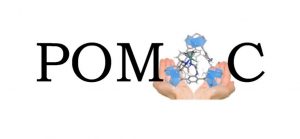
https://anr.fr/Project-ANR-18-CE07-0025
https://www.linkedin.com/company/pomac-anr/
Dr. Jérôme Canivet, project coordinator “ We investigate ground breaking immobilization approaches for assymetric Catalysis. Our approach is based on Macroligand concept which brings the gap between molecular and solid catalyst”. We are glad to collaborate with Dr. Caroline Mellot-Drazniek (CNRS – Collège de France).
- DecompNOx – Nanoparticules multimétalliques à base d’or incorporées dans des nanoboites de zéolite pour la décomposition directe de NO en excès d’O2
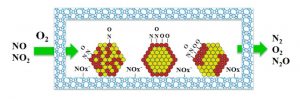
https://anr.fr/Projet-ANR-18-CE07-0002
Dr. Frédéric Meunier, project coordinator “the project aims at developing new catalysts based on nanoparticles of alloy containing gold for the direct decomposition of NOx (2 NOx = N2 + x / 2 O2) in the presence of O2 without any reducing agent.” We are glad to collaborate with the Surface Reactivity Laboratory (LRS, Paris).
Partenariats
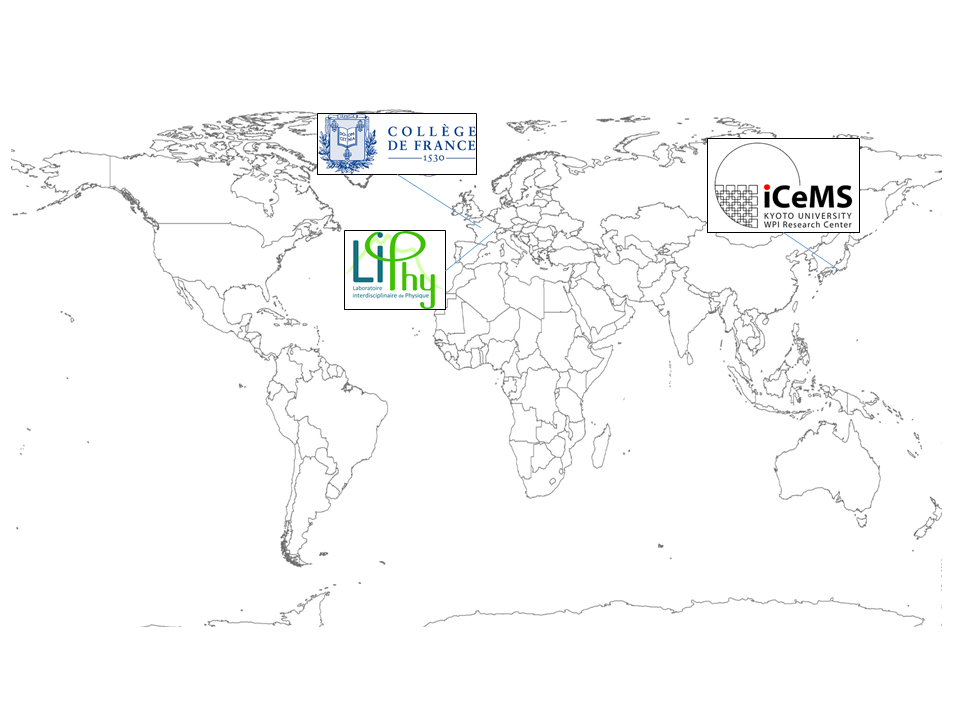
Current program
H-CCAT : https://cordis.europa.eu/project/rcn/206561_en.html
PRODIA : https://cordis.europa.eu/project/rcn/198807_en.html
C123 : https://cordis.europa.eu/project/rcn/198807_en.html
IMPRESS : https://www.avantium.com/renewable-chemistries/mekong/
Past
TOPCOMBI : https://cordis.europa.eu/project/rcn/75746_en.html
OCMOL : https://cordis.europa.eu/project/rcn/92879_en.html
NanoMOF : https://cordis.europa.eu/project/rcn/92877_en.html
FASTCARD : https://cordis.europa.eu/project/rcn/110686_en.html
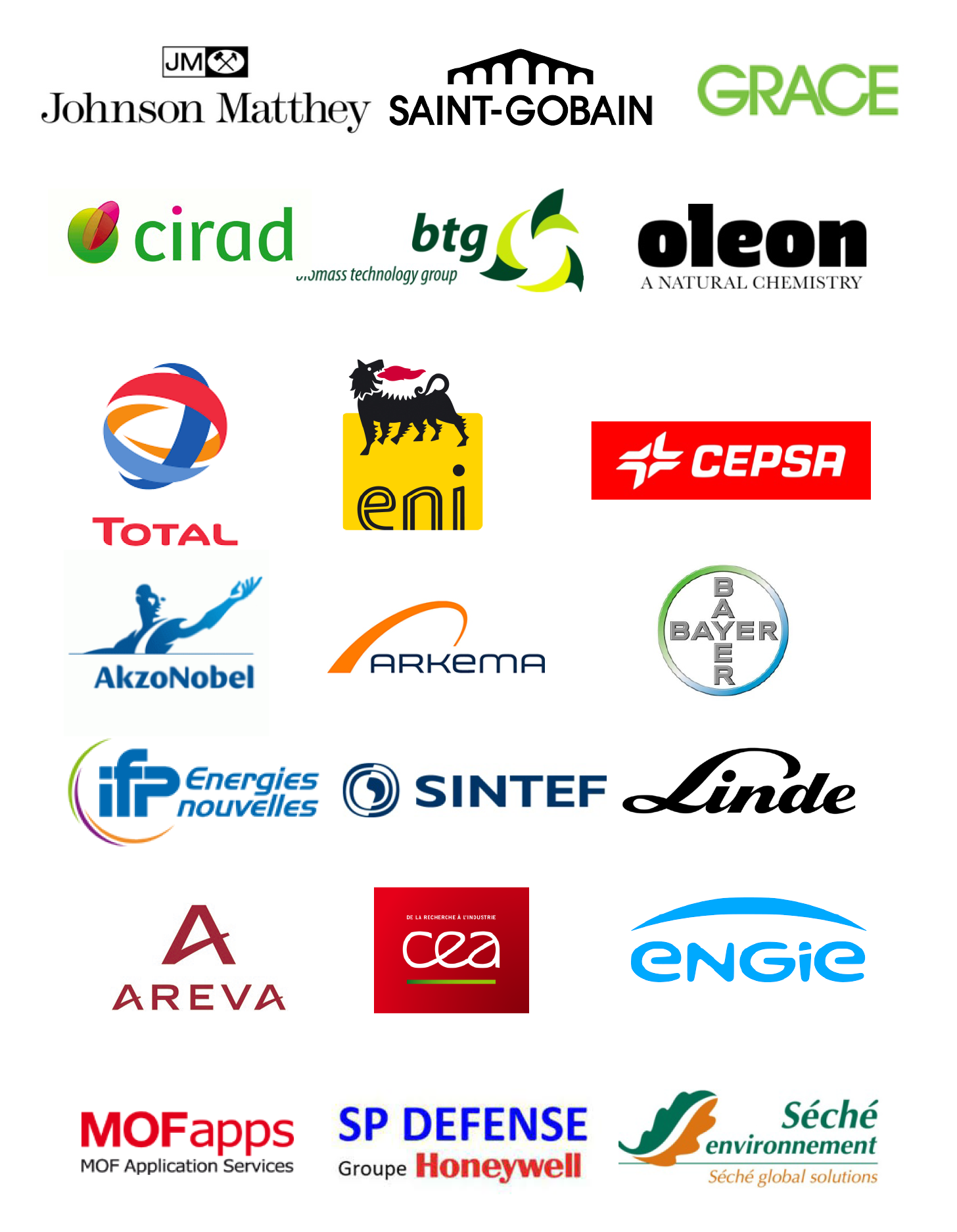
Capacités expérimentales et instrumentales
L’équipe ING dispose d’un parc instrumental exceptionnel dédié à la catalyse et l’adsorption conçu et réalisé par les ingénieurs et chercheurs de l’équipe comprenant :
1 – Bancs de tests catalytiques « à façon » répondant aux besoins des applications (C. Daniel, E. Landrivon, F. Morfin)
2 – Plateforme de mesures d’adsorption et de diffusion (C. Daniel)
3 – Plateforme de catalyse hétérogène haut-débit (Management: C. Daniel, AxelOne Campus)
1 – Bancs de tests catalytiques « à façon » répondant aux besoins des applications (C. Daniel, E. Landrivon, F. Morfin)
Notre équipe conçoit et réalise des dispositifs de tests catalytiques « sur mesure » répondant à des contraintes variées telle que la pression, la température, le temps de séjour, la géométrie du réacteur. Pour concevoir et réaliser ces prototypes, l’équipe s’appuie sur les compétences de ses personnels en dimensionnement de réacteur, procédé ; instrumentation et capteurs, analyse et automatisation. Les contraintes de sécurité sont également prises en compte grâce à des systèmes de capteurs asservis qui permettent une mise en repli des équipements.
Exemples :
- oxydation sélective du méthane à 800°C sous 10 bars
- (oxy)vaporéformage du méthane sur des réacteurs de type mousse
- Réacteur de pyrolyse
- Réacteur MAT FCC
- Conversion du CO2 en procédé CSTR
- Réacteur triphasique pour la dimérisation de l’éthylène, l’hydroformylation
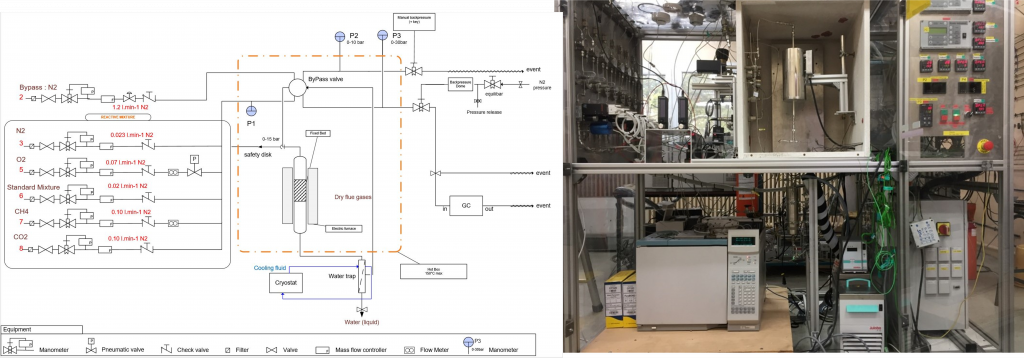
2 – Plateforme de mesures d’adsorption et de diffusion (C. Daniel)
Mesure volumétrique en statique : l’équipe dispose de 5 appareils de mesures commerciaux (Bel Japan).
- 2 Belsorp Mini pour la caractérisation de la porosité.
- 2 Belsorp Max pour les mesures de gaz et vapeurs (eau, hydrocarbures, alcools).
- 1 Belsorp HP pour les mesures de capacités de stockage en H2, CH4 et CO2.
La technique de « ZLC » (Zero-Length Column) a été implantée pour répondre aux besoins de mesures de diffusion, permettant d’établir la relation entre facteur d’efficacité et module de Thiele dans les matériaux hiérarchisés.
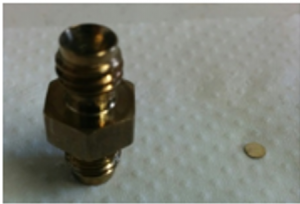
https://doi.org/10.1016/j.micromeso.2020.110499
Enfin pour compléter ces deux approches fondamentales de l’adsorption sous vide et par ZLC , deux équipements permettent d’effectuer des courbes de perçage à la demande en dynamique. Différentes tailles de réacteur (poudre, extrudes) ainsi que différents détecteurs de molécule sonde (PID, FTIR) permettent de tester de nombreuses configurations, notamment en co-adsorption. Cette approche au plus près du procédé permet d’évaluer les propriétés de capture / séparation de matériaux conçus par l’équipe et/ou mise en forme dans des conditions réelles.

Industrial & Engineering Chemistry Research 58 11 4560-4571 10.1021/acs.iecr.8b04866
Microporous And Mesoporous Materials 265 143-148 10.1016/j.micromeso.2018.02.011
3 – Plateforme catalyse hétérogène haut-débit (Gestion : C. Daniel)
Deux unités Avantium Flowrence sont hébergées sur la plateforme collaborative Axel’One Campus. Ils permettent d’établir les performances de catalyseurs. Grâce aux technologies de miniaturisation et de parallélisations, il est possible de tester 16 catalyseurs par jour dans des conditions proches de celles mises en œuvre dans les applications réelles et avec une qualité inégalée.
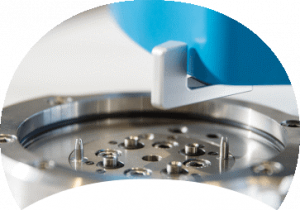
Ces unités haut débit (EHD) ont été implantées avec un cahier des charges HSE très strict (fonctionnent en continu 24h/24 sous pression de CO et d’H2.)
La gestion logistique et scientifique de la plateforme (collaborations, budget, maintenance des unités, évolution des outils) est gérée par IRCELYON (C. Daniel, D. Farrusseng).
Exemples d’études utilisant les unités Flowrence :
- Étude cinétique de catalyseurs Fischer-Tropsch : Catalysis Science & Technology, 2020, DOI: 10.1039/D0CY00918K
- Découverte d’une tendance non-linéaire dans la formulation de catalyseur de raffinage : Chemcatchem, 2020, https://doi.org/10.1002/cctc.201902260
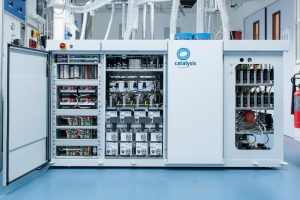
Personnels
Chercheurs et enseignants-chercheurs
Personnels techniques
Post-doctorants
Doctorants
Autres
Publications
-
CHEMICAL ENGINEERING JOURNAL, 2025, 514, p.
-
ADSORPTION-JOURNAL OF THE INTERNATIONAL ADSORPTION SOCIETY, 2025, 31(5), p.
-
Artificial intelligence-driven advances in photocatalytic hydrogen production
NEW JOURNAL OF CHEMISTRY, 2025, p.
-
Dynamics Slowdown Induced by Gas Oversolubility in Nanoconfined Fluids
ACS NANO, 2025, 19(13), pp. 12971-12981
-
Roots and Wings for a Better World at the 18th International Congress on Catalysis in Lyon, France
CHEMCATCHEM, 2025, 17(6), p.

